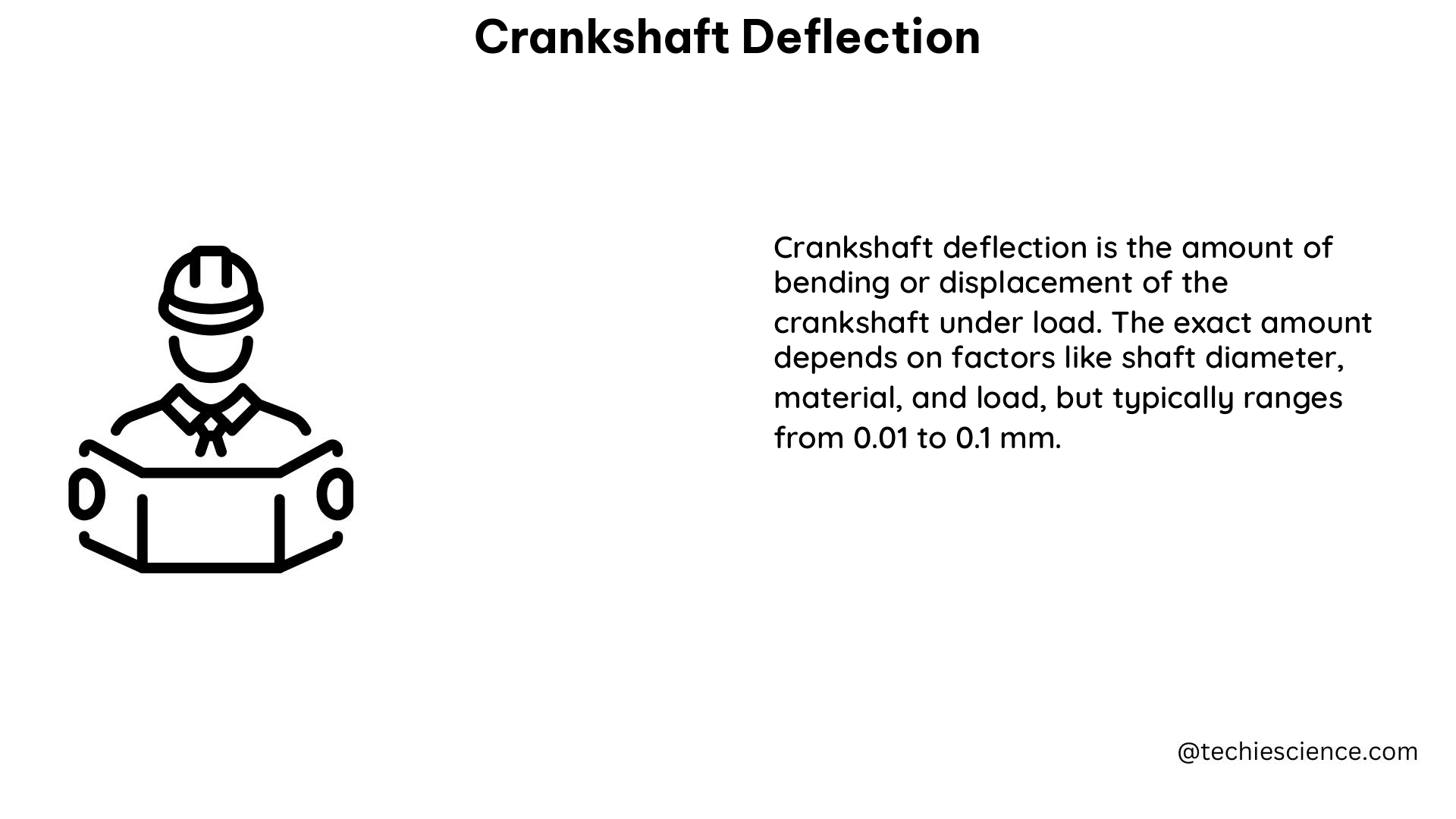Crankshaft deflection is a critical parameter in engine performance and maintenance, as it measures the deformation or bending of the crankshaft due to various factors. This comprehensive guide will delve into the intricacies of crankshaft deflection, providing you with a deep understanding of the measurement process, the factors influencing it, and the innovative methods used to enhance the accuracy of these measurements.
Understanding Crankshaft Deflection
Crankshaft deflection is the measure of the deformation or bending of the crankshaft in an engine, which can occur due to a variety of reasons, such as:
- Wear in Bearings: Over time, the bearings that support the crankshaft can experience wear, leading to increased clearance and, consequently, crankshaft deflection.
- Misalignment: Improper alignment of the crankshaft, either during installation or due to changes in the engine’s structure, can result in crankshaft deflection.
- Excessive Loads: High loads, such as those experienced during heavy-duty operations or engine overloading, can cause the crankshaft to bend or deform.
The deflection can be measured in two primary directions: horizontal (S-P) and vertical (T-B) deflections. These measurements are then compared to the allowed limits specified by the engine manufacturer to assess the alignment and condition of the crankshaft.
Crankshaft Deflection Measurement Procedure

The crankshaft deflection measurement process involves the following steps:
- Positioning the Deflection Gauge: A deflection gauge is placed opposite the crankpin, which is the point where the connecting rod attaches to the crankshaft.
- Measurement Locations: Measurements are taken at various positions along the crankshaft, including the bottom port (BP), port (P), top of the crankshaft (TDC), starboard (S), and bottom starboard (BS) for each cylinder.
- Measurement Conditions: The measurements should be taken when the engine is cooled off and the ship is afloat. The ship’s bridge should be notified to prevent the engine from being turned on during the measurement process.
- Recording Measurements: The measurements are recorded in a table, and the following deflections are calculated:
- B: The average of the Bottom port and Starboard deflections.
- Horizontal deflection (S-P).
- Vertical deflection (T-B).
Analyzing Crankshaft Deflection
The recorded measurements and calculated deflections are then compared to the manufacturer’s allowed limits to assess the alignment and condition of the crankshaft. Additionally, a deflection curve can be plotted using the vertical deflections for each unit to identify any additional misalignments between the webs, even if the overall deflection values are within the acceptable range.
Factors Influencing Crankshaft Deflection
Several factors can contribute to crankshaft deflection, including:
- Loose Foundation Bolts: Improperly tightened or worn foundation bolts can allow the engine to shift, leading to crankshaft misalignment and deflection.
- Ship Hull Deformations: Incorrect cargo loading or significant discrepancies between sea and air temperatures can cause deformations in the ship’s hull, which can, in turn, affect the crankshaft alignment.
- Bearing Wear: Over time, the bearings that support the crankshaft can experience wear, leading to increased clearance and crankshaft deflection.
- Temperature Variations: Significant changes in temperature, either due to environmental conditions or engine operation, can cause thermal expansion or contraction, affecting the crankshaft alignment.
- Human Error: Improper installation, maintenance, or measurement procedures can also contribute to crankshaft deflection.
Innovative Measurement Techniques
To address the challenge of deformation in large crankshafts during the measurement process, researchers have proposed an innovative method that involves using a force sensor to measure the geometric condition of the shaft and eliminate the effect of elastic deformation. This method has been experimentally verified and shown to provide accurate measurements of the geometric deviation of the main journals of large-size crankshafts.
The key aspects of this innovative method include:
- Force Sensor Integration: A force sensor is integrated into the measurement setup to measure the forces acting on the crankshaft during the deflection measurement.
- Deformation Elimination: By accounting for the elastic deformation of the crankshaft using the force sensor data, the method can eliminate the effect of deformation and provide more accurate geometric measurements.
- Experimental Validation: The effectiveness of this method has been demonstrated through experimental studies, where it has been shown to outperform traditional measurement techniques in terms of accuracy and reliability.
Conclusion
Crankshaft deflection is a critical parameter in engine maintenance and diagnosis, and understanding the measurement process, the factors influencing it, and the innovative techniques used to enhance accuracy is essential for maintaining engine performance and reliability. This comprehensive guide has provided you with a deep dive into the world of crankshaft deflection, equipping you with the knowledge and tools to tackle this important aspect of engine maintenance.
References
- Method to Increase the Accuracy of Large Crankshaft Geometry Measurements Using Counterweights to Minimize Elastic Deformations. ResearchGate. Link
- How to Measure Crankshaft Deflection on Generators – YouTube. Link
- Engine Crankshaft Deflection Measurement Guide | IIMS. Link
- How to Conduct a Crankshaft Deflection Measurement – Plan M8. Link
- A Force-Sensor-Based Method to Eliminate Deformation of Large Crankshafts During Measurement of Their Geometric Condition. NCBI. Link

The lambdageeks.com Core SME Team is a group of experienced subject matter experts from diverse scientific and technical fields including Physics, Chemistry, Technology,Electronics & Electrical Engineering, Automotive, Mechanical Engineering. Our team collaborates to create high-quality, well-researched articles on a wide range of science and technology topics for the lambdageeks.com website.
All Our Senior SME are having more than 7 Years of experience in the respective fields . They are either Working Industry Professionals or assocaited With different Universities. Refer Our Authors Page to get to know About our Core SMEs.